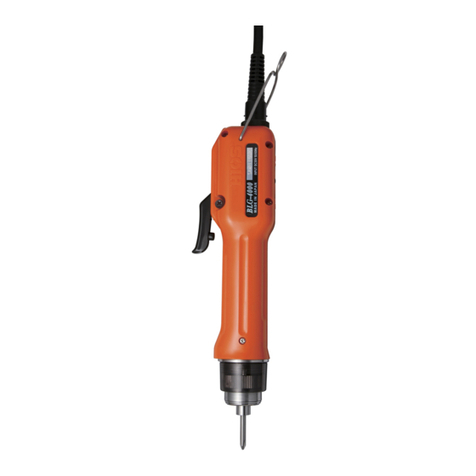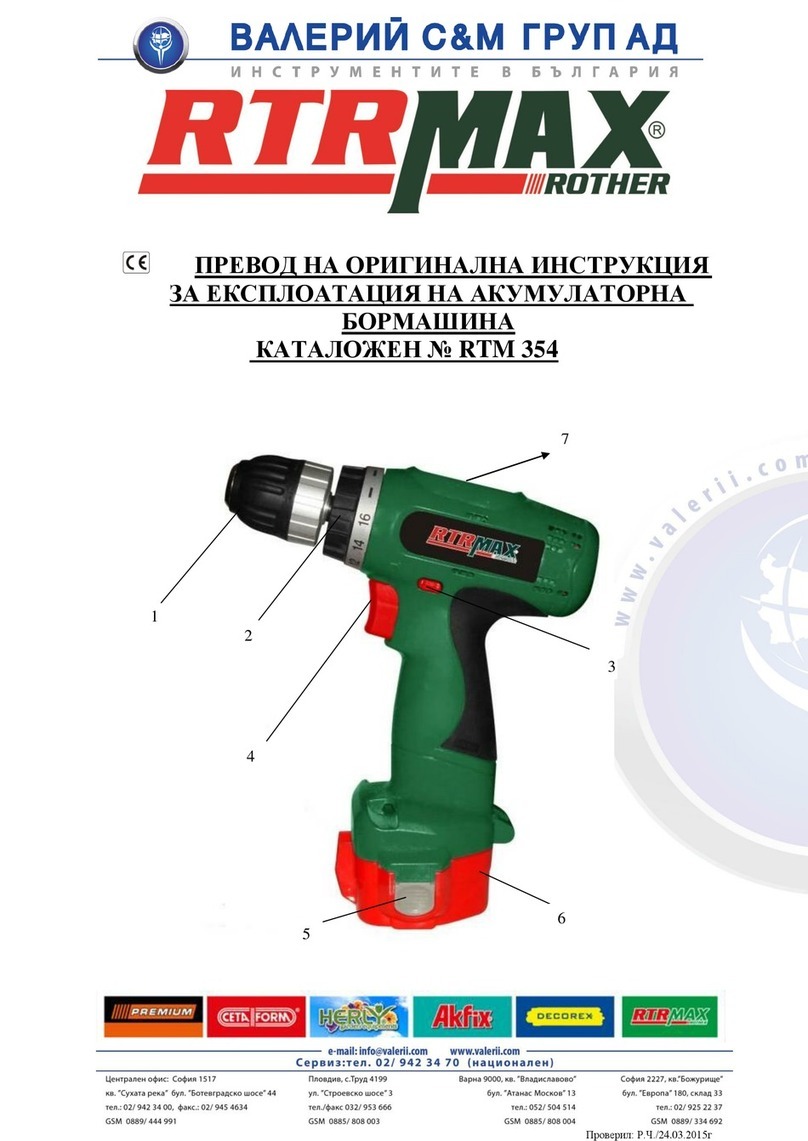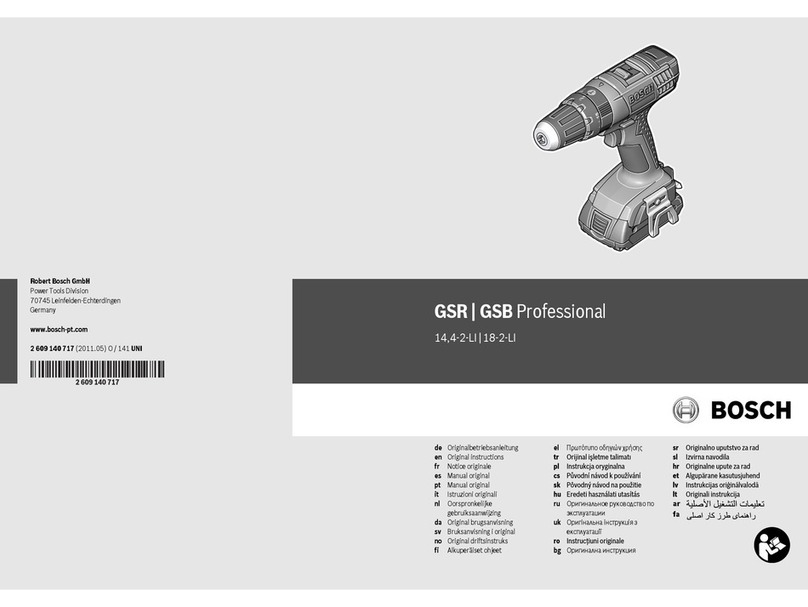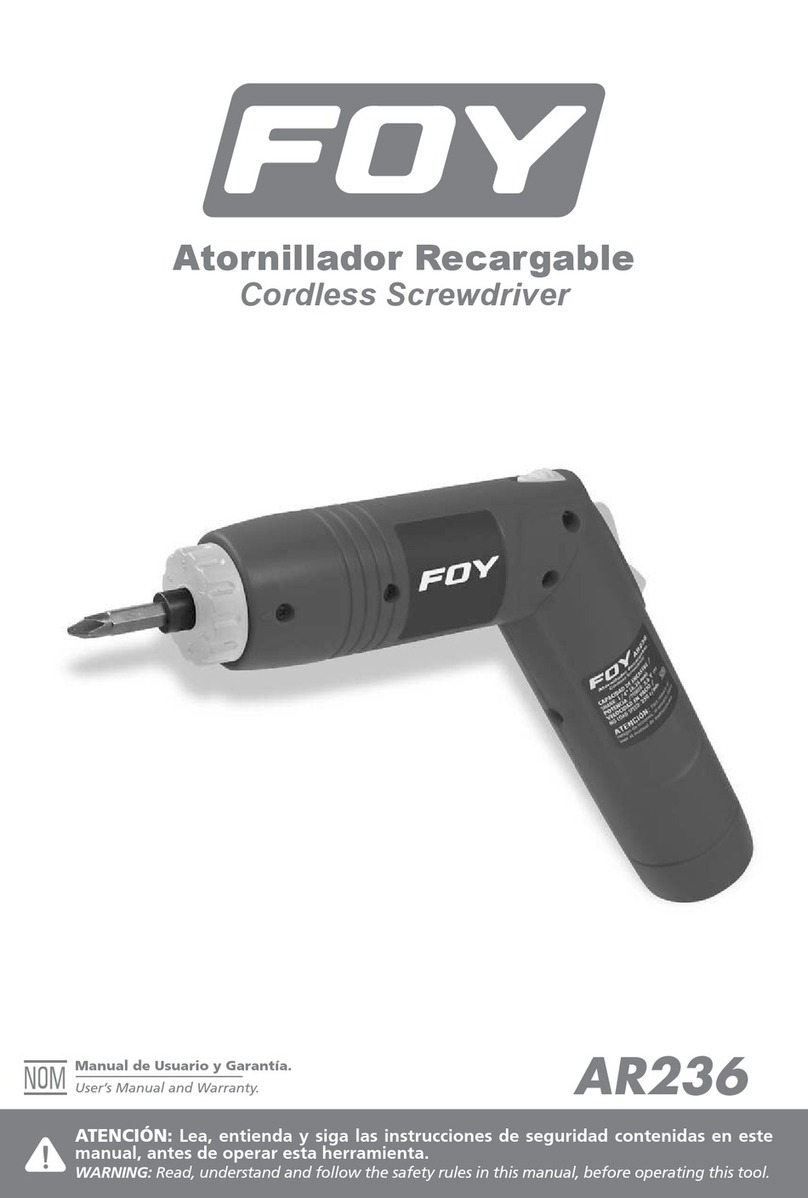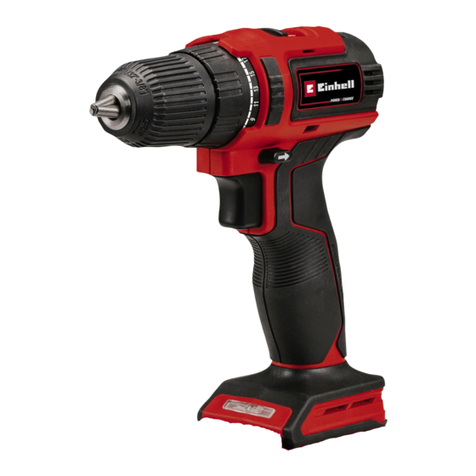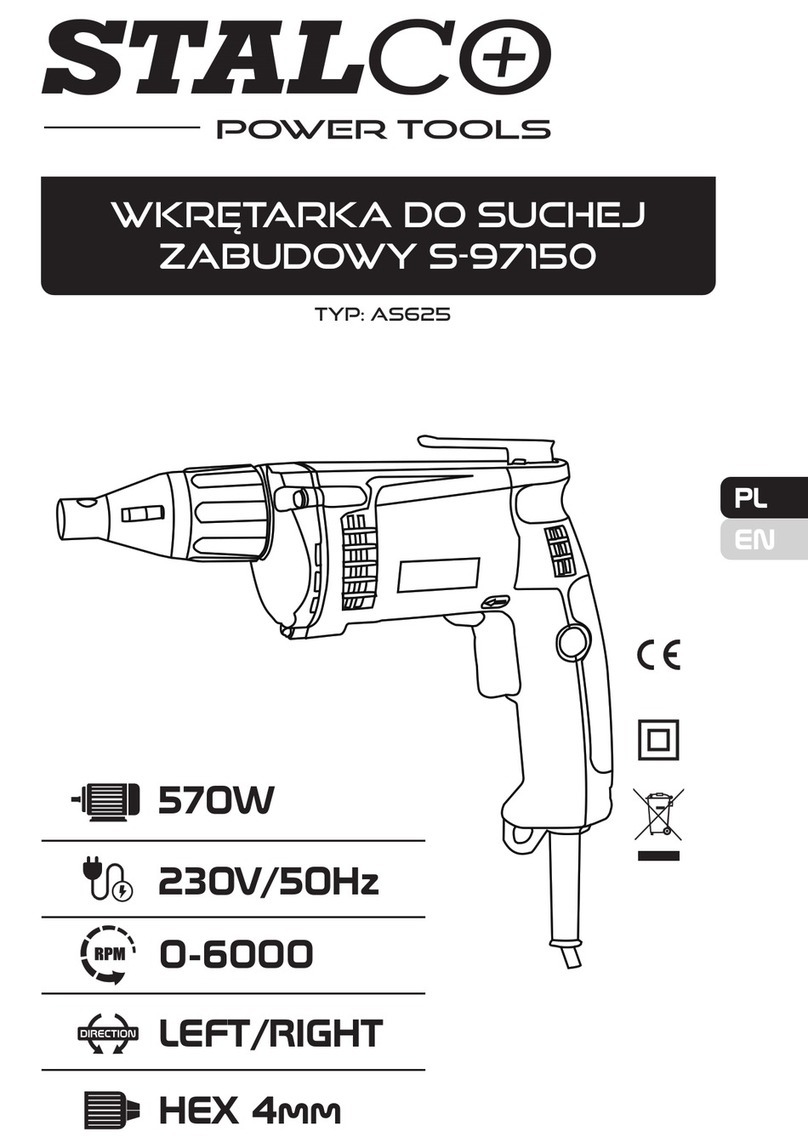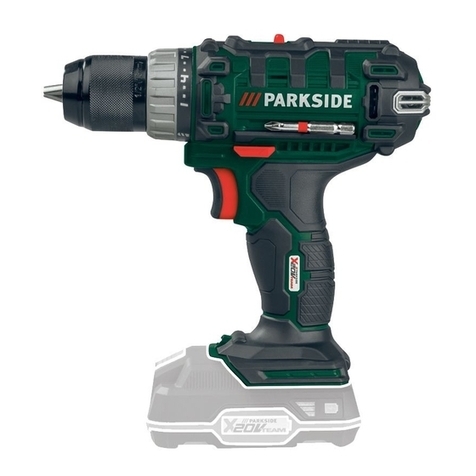Tchibo 301226 Service manual

16
Guarantee
We grant a three-year guarantee from the date of purchase.
Product number: E 301 226
16
This product was manufactured using
the latest production techniques and
has undergone thorough quality
control inspection. We guarantee that
the product is in perfect condition.
We will remedy all defects in workman-
ship or materials within the guarantee
period. In order for the guarantee to be
granted, all warranty claims must be
accompanied by proof of purchase
from Tchibo or from an authorised
Tchibo distribution partner.
If, contrary to our expectations,
a defect is found, please contact our
customer care service at the following
e-mail address:
service@tchibo.de
Our customer consultants will be
pleased to advise you on further
procedure.
Damage due to improper use, as well
as worn parts and consumables, are
not covered by the guarantee.
Please have the product number at
hand in case of any queries.
This guarantee does not restrict
statutory warranty rights.
1
Original instructions for use and guarantee
Cordless Screwdriver
Tchibo GmbH D-22290 Hamburg • 72241AB1X1IV

I
T
i
T
p
T
i
T
s
D
r
•
•
D
•
•
•
•
Dear Customer
With yo r sef l, new cordless screwdriver yo can complete odd jobs aro nd the home in the
blink of an eye. The practical LED light makes it easy to work even in dark corners, while the
magnetic screw holder keeps yo r hands free. Yo can se the capacity display to check the
battery's charge – so the cordless screwdriver is always ready for operation.
We hope yo will enjoy sing yo r new cordless screwdriver.
Your Tchibo Team
2
2
Contents
2 About these instructions
4 General safety warnings for power tools
(according to the German Industrial
Standard DI E 60745-1)
6 Information on safe battery usage
8 Additional information for power tools
9 At a glance (package contents)
10 First-time use
11 Use
12 Care / maintenance / storage
13 Disposal
14 Technical specifications
15 Declaration of Conformity
16 Guarantee
This product is equipped with safety features.
Nevertheless, read the safety warnings carefully
and only use the product as described in these
instructions to avoid accidental injury or
damage.
eep these instructions for future reference. If
you pass the product on to someone else, be
sure to give them these instructions.
Symbols used in these instructions:
The term DA GER warns of potential severe
injury and danger to life.
The term WAR I G warns of injury and severe
material damage.
The term CAUTIO warns of minor injury or
damage.
This indicates supplementary
information.
This symbol warns you of
the danger of injury due
to electricity.
This symbol warns you of
the danger of injury.
About these instructions
Declaration of Conformity
15
15

Technical specifications
Model: 301 226
Mains adapter: Input: 230 V ~ 50 Hz
Output: 6 V 300 mA
Protection class : II
Power consumption: 6.5 W
Rechargeable battery : Type : 1x lithium-ion, 1.3Ah
Charging voltage: 6 V
Charging current: 300 mA
Charging time: max. 5 hours
Motor: Voltage: 3.6 V
Idling speed: 200 rpm
Clockwise/anticlockwise: yes
Sound pressure level LpA = 59 dB(A)
Uncertainty pA = 3 dB
Sound power level LWA = 70 dB(A)
Uncertainty WA = 3 dB
Vibration emission value ah0.291 m/s2
Uncertainty = 1.5 m/s2
Weight: approx. 0.4 kg
Ambient temperature: Operation: +10 to +40 °C
Storage: +5 to +30 °C
ISC GmbH
Eschenstraße 6, 94405 Landau/Isar, Germany
+–
14
14
WAR I G – Read the instructions for
use to reduce the risk of injury.
Wear ear protectors. Exposure to noise
may cause hearing loss.
Wear protective glasses.
Sparks produced as you work or splin-
ters, shavings and dust produced by the
screwdriver may cause loss of sight.
Intended use
The cordless screwdriver is intended for screw -
ing in and loosening screws.
The machine may only be used for its intended
purpose. Any other use is considered improper.
The user/operator is liable for any damage or
injuries caused in this way, not the manufacturer.
The product is designed for home use and is not
suitable for commercial purposes.
DA GER to children and people with
restricted capabilities of operating appliances
• This device is not intended for use by children
or those who lack the physical, sensory or
mental capabilities, or the experience and
knowledge to be able to use it safely. Children
should be supervised to ensure that they do
not play with the device.
• The device and packaging material are not
toys! Children must not play with plastic bags,
films and small parts! There is a risk of
choking or suffocation!
DA GER due to electricity
• The device must not be used in rooms subject
to explosion hazards.
• Protect the product from moisture.
Water penetrating an electrical device
increases the risk of electric shock.
• Do not touch the mains adapter with moist
hands. Do not use it outdoors or in rooms with
high humidity.
• Check before use that all moving parts are
working correctly and do not jam and that no
parts are broken or damaged in such a way as
to impair the function of the device. Do not
operate the device if the device itself or the
mains adapter show visible signs of damage
or if the device has been dropped.
• Unplug the mains adapter from the wall
socket in the event of a technical fault or
during thunderstorms. Always pull on the
mains adapter, never on the mains cord.
• Do not make any modifications to the product
or try to replace the mains cord yourself.
Have repairs to the device or mains adapter
carried out by a specialist workshop only or
contact the customer care service.
• The device contains lithium-ion rechargeable
batteries. These cannot and must not be
replaced. If the rechargeable batteries are
damaged, contact the customer care service.
Never attempt to open the casing. The device
must not be used if there is damage to the
casing.
WAR I G – risk of injury
• Do not let people use the device who are not
familiar with it or who have not read the
instructions for use.
• Avoid starting the device accidentally.
• Do not use flawed or damaged attachments.
• For your own safety, only use accessories or
auxiliary equipment specified in the instruc-
tions for use or those recommended by the
tool manufacturer. The use of accessories
other than those recommended in the instruc-
tions for use may lead to personal injury.
• Never use an electrical tool with a defective
switch. A power tool that can no longer be
switched on or off is dangerous and must be
repaired.
CAUTIO – material damage
• There is an LED light installed in the device.
This cannot and must not be replaced.
3

5
4
4
General safety warnings for power tools
(according to the German Industrial Standard DI E 60745-1)
WAR I G! Read all safety warnings and
instructions. Failure to follow all safety warnings
and instructions listed below may result in
electric shock, fire and/or serious in ury.
Keep all safety warnings and instructions so
that you can refer to them later on. The term
"power tool" in the safety warnings refers to
electrical mains powered tools (with mains cord)
or battery operated tools (without mains cord).
1) Work area
a) Keep the work area clean and well lit.
Cluttered and dark areas can lead to
accidents.
b) Do not operate power tools in flammable
areas, such as in the presence of flam-
mable liquids, gases or dust. Power tools
create sparks which may ignite the dust or
fumes.
c) Keep children and bystanders away while
operating a power tool. Distraction can
cause you to lose control of the power tool.
2) Electrical safety
a) Power tool plugs must match the outlet.
ever modify the plug in any way. Do not
use any adapter plugs with earthed
power tools. Unmodified plugs and match -
ing outlets will reduce the risk of electric
shock.
b) Avoid any contact with earthed or
grounded surfaces such as pipes, radia-
tors, stoves and refrigerators. There is an
increased risk of electric shock if your appli-
ance or system is earthed or grounded.
c) Do not expose power tools to rain or wet
conditions. Water getting into a power tool
will increase the risk of electric shock.
d) Do not misuse the cord. ever carry the
power tool by the cord or pull on the cord
to remove the plug from the outlet. Keep
the cord away from heat, oil, sharp edges
or moving parts. Damaged or tangled
cords increase the risk of electric shock.
e) When operating a power tool outdoors,
use an extension cord suitable for out-
door use.
Using a cord suitable for outdoor use
reduces the risk of electric shock.
f) If use of a power tool in a humid location
is unavoidable, use a residual current
differential device (RCD). The use of an
RCD reduces the risk of electric shock.
3) Personal safety
a) Stay alert, watch what you are doing and
use common sense when operating a
power tool. Do not use a power tool while
you are tired or under the influence of
drugs, alcohol or medication. A moment
of inattention while operating power tools
may result in serious personal in ury.
b) Use safety equipment. Always wear eye
protection. Safety equipment such as dust
masks, non-skid safety shoes, hard hats or
hearing protection used for appropriate
conditions will reduce the risk of personal
in uries.
c) Avoid starting the drill unintentionally.
Make sure that the switch is in the off
position before plugging the tool into the
mains and/or inserting the rechargeable
batteries, picking up the tool or carrying
it. Carrying power tools with your finger on
the switch or plugging in power tools while
they are switched on may lead to accidents.
d) Remove any adjustment keys or wrenches
before turning the power tool on.
A wrench or a key left attached to a rota-
ting part of the power tool can result in
personal in ury.
e) Do not overreach. Keep a proper position
at all times. Keep proper footing and
balance at all times. This enables better
control of the power tool in unexpected
situations.
f) Dress properly. Do not wear loose clothing
or jewellery. Keep your hair, clothing and
gloves away from moving parts. Loose
clothing, ewellery or long hair can get
caught in moving parts.
g) If vacuum devices are provided for dust
removal, make sure these are properly
connected and used.
Using
dust collectors
can reduce dust-related risks.
4) Use and maintenance of a power tool
a) Do not overload the power tool. Use the
appropriate power tool for your needs.
You will get the ob done better and safer if
using tools for their intended purpose.
b) Do not use the power tool if the switch
does not turn it on and off. Any power tool
that cannot be controlled with the switch is
dangerous and must be repaired.
Disposal
n
s
The products, its packaging and the built-in
rechargeable battery have been manufactured
from valuable materials that can be recycled.
Recycling reduces the amount of waste and
helps to preserve the environment.
Dispose of the packaging at a recycling point,
which sorts materials by type. Make use of the
local facilities provided for collecting paper, card-
board and lightweight packaging.
Devices marked with this symbol
must not be disposed of along with
household waste!
You are legally bound to dispose of old
devices separately from household
waste. Information about the collection
point where old deviceså can be
disposed of free of charge is available
from your local authorities.
Regular batteries and rechargeable
batteries must not be disposed of along
with normal household refuse!
You are legally bound to dispose of flat
batteries and rechargeable batteries at a
local authority collection point or to
return them to a battery retailer.
Regular batteries and rechargeable
batteries marked with these letters
contain the following, and other, harmful
substances:
Pb = lead, Cd = cadmium, Hg = mercury.
Pb
Cd
Hg
13
13

Care / maintenance / storage
12
Cleaning
Clean the device as soon as possible after each
use. In particular, keep the air slots and switches
free from dust and dirt.
Wipe off dust and similar dirt particles with a
dry cloth or use compressed air at a low pres-
sure.
Clean the device regularly with a damp cloth
and some soft soap. Ensure that no water
gets inside the device!
Maintenance
The device does not require any maintenance.
Storage
• Store the device and its accessories in a dark,
dry and frost-free place out of the reach of
children.
• The optimum storage temperature is between
+5 and +30°C.
• Store the cordless screwdriver in the storage
case supplied.
Charge the battery before storing the device.
Also note the information on storing batteries
in “Information on safe battery usage”.
m
m
DA GER– risk of fatal electric shock
• Remove the mains adapter from the
wall socket before cleaning the device.
• The device must not be exposed to
moisture. It must also be protected
against drops and splashes of water.
WAR I G – risk of injury
• Before cleaning, slide the rotation
direction switch into the central
position to lock the On/Off switch.
CAUTIO – material damage
• Do not use any cleaning or solvent-
based products as these could corrode
the plastic parts.
m
mT
r
f
R
h
D
w
lo
b
12
5
5
c) Disconnect the plug from the power
source and/or remove the rechargeable
battery before making any adjustments,
changing accessories, or storing power
tools. Such preventive safety measures
reduce the risk of starting power tools
accidentally.
d) Store power tools out of the reach of
children when not in use and do not allow
persons unfamiliar with the power tool or
these instructions to operate the power
tool. Power tools are dangerous in the
hands of untrained users.
e) Maintain power tools. Make sure that
none of the moving parts are misaligned
or damaged, that no parts are broken and
that there are no other conditions that
could affect a power tool’s operation. If
damaged, have the power tool repaired
before use. Many accidents are due to badly
maintained power tools.
f) Keep cutting tools sharp and clean.
Properly maintained cutting tools with
sharp cutting edges are less likely to am
and easier to control.
g) Use the power tool, accessories and
attachments, etc. in accordance with
these instructions while taking into
account the work conditions and the
work to be done. Using power tools in ways
for which they were not intended could
result in hazardous situations.
5) Use and maintenance of the rechargeable
power tool
a) Only charge batteries in battery chargers
that were recommended by the manu-
facturer. If the battery charger is designed
for a certain type of battery, there is a risk
of fire if it is used with different batteries.
b) Only use the batteries provided in the
power tools. The use of other rechargeable
batteries can result in in uries or fire.
c) Store the unused battery away from
paperclips, coins, keys, nails, screws or
any other small metallic objects that
could cause bridging between the con-
tacts. A short circuit between the battery
contacts can cause burns or fire.
d) Incorrect use may result in fluid escaping
from the battery. Avoid contact with this
fluid. In case of accidental contact, rinse
with water. If the fluid gets into your
eyes, seek medical assistance. Leaking
battery fluid can result in skin irritation or
burns.
6) Service
a) Have your power tool repaired by quali-
fied experts using only identical replace-
ment parts. This will ensure that the safety
of the power tool is maintained.
7) Information on using the screwdriver
Hold the device by the insulated handle
when carrying out work in areas where the
screw or the insertion tool might encounter
concealed power cables. Contact with a live
cable can also transfer voltage to metal parts
and cause an electric shock.
s
l

•
•
•
P
•
•
•
•
•
6
Despite extensive safety precautions, caution
is always required when handling batteries.
To ensure safe operation, the following points
must always be observed.
Safe operation is only guaranteed with unda-
maged cells! Incorrect handling can result in
cell damage.
Caution! Analyses confirm that improper use
and incorrect care are the main causes of
damage in high-performance batteries.
Battery information
• The battery pack in the battery-operated tool
is not charged upon delivery. The battery
must be charged before first-time use.
• For optimal battery performance avoid com-
plete discharge cycles! Charge the battery
regularly.
• Store the battery in a cool place, ideally at
15°C and at least 40% charged.
• Lithium-ion batteries undergo a natural
ageing process. The batteries must be
replaced at the latest when the battery capa-
city amounts to only 80% of when they were
new. Weakened cells in an old battery pack no
longer measure up to the high performance
requirements and therefore pose a safety risk.
• Do not throw used batteries into an open fire.
Risk of explosion! Do not ignite batteries or
expose them to fire.
•Do not completely discharge the batteries!
Complete discharge damages the battery cells.
The most common cause for complete dis -
charge of battery packs is long-term storage
or lack of use of partially charged batteries.
Stop working as soon as the performance
becomes noticeably diminished or the pro-
tection circuit is tripped. Only store the bat-
tery after charging completely.
•
Protect batteries and device from becoming
overloaded!
Overloading quickly leads to
overheating and cell damage inside the
battery casing without the overheating
becoming externally apparent.
•Avoid damage and impacts!
Replace batteries immediately if they have
fallen from a height of more than 1 m or were
exposed to a heavy impact, even if the battery
pack casing appears undamaged. The battery
cells inside could be seriously damaged.
Please also observe the information on
battery disposal.
• For safety reasons, the integrated safety
switch disables the device if it becomes over-
loaded or overheated. Caution! Do not acti-
vate the On/Off switch if the safety switch has
disabled the device. This can result in damage
to the battery.
• Only use the original rechargeable batteries.
The use of other rechargeable batteries can
result in injuries, explosions or fire.
otes on the battery charger and charging
process
• Please observe the information indicated on
the tool identification plate on the battery
charger. Only connect the battery charger to
the mains voltage indicated on the tool identi-
fication plate.
• Protect the battery charger and cable from
damage and from sharp edges. Damaged
cables must be replaced by an electrician
immediately.
• eep the battery charger, batteries and
battery-operated tool away from children.
• Do not use the battery charger if it is
damaged.
• Do not use the battery charger provided
for charging other battery-operated tools.
• The battery pack becomes warm with heavy
use. Allow the battery pack to cool down
to room temperature before starting the
charging process.
•Do not overcharge the batteries!
Please observe the maximum charging time.
These charging times only apply to dis charged
batteries. Repeatedly plugging in charged or
partially charged batteries overcharges them
and damages the cells. Do not leave batteries
plugged into the charger for several days at a
time.
•ever charge or use batteries that you
suspect were last charged more than
12 months ago.
It is highly likely that the battery is already
dangerously damaged (deep discharge).
• Charging at a temperature under 10°C results
in chemical damage to the cells and can start
a fire.
• Do not use any batteries that have become
warm during charging, as the battery cells
could be dangerously damaged.
Information on safe battery usage
6
Use
11
Switching on and off
To switch on, press the On/Off switch down
fully and hold it pressed down.
To switch off, release the On/Off switch.
Setting the rotation direction
Slide the rotation direction switch to the left
to rotate screws in a clockwise direction.
Slide the rotation direction switch to the right
to rotate screws in an anticlockwise
direction.
Slide the rotation direction switch to the
central position to lock the On/Off switch.
Inserting a bit
1. Slide the rotation direction switch to the
central position to lock the On/Off switch.
2. Insert the selected bit into the bit holder as
far as it will go.
The bit holder is magnetic and holds the bit in
position.
To remove the bit, pull it against the slight
resistance out of the bit holder.
Using the bit extension
You can use the bit extension provided for hard
to reach work areas. The extension bit holder is
also magnetic.
Illuminating the work area
To switch on the LED light, slide the light
switch forwards.
To switch off the LED light, slide the light
switch backwards.
Tips for using the screwdriver
• In order to have the required screws ready
to use while working, you can place them
on the magnetic screw holder on top of the
device.
• It is best to use self-centering screws
(e.g. Torx, Philips) to ensure safe working.
• Always ensure that the bit and screw used
match in shape and size.
• Place the bit on the screw before switching
on the device.
• Always hold the device, bit and screw in a
straight line.
m
m
CAUTIO – material damage
• Only change the rotation direction
when it is stationary so that you do not
damage the transmission.
m
m
m
m
m
CAUTIO – material damage
• Only use fault-free and suitable bits.
• The device is not designed for drilling,
grinding or other similar functions. Do
not use any other bits with this device
than those provided.
• Before screwing into internal or
external walls, check them for electri-
city, gas or water pipes.
m
ge
e
t
11

S
S
I
1
2
m
m
m
m
m
m
First-time use
10
Unpacking
Open the packaging and carefully remove the
device.
Remove all packaging material. Check
whether the package contents are complete.
Check the device and the accessories for
damage from transportation.
Charging the battery
The battery pack in the battery-operated tool is
not charged upon delivery. The battery must be
charged before first-time use. This takes approx.
5 hours.
1. Insert the plug of the mains adapter into the
mains connection socket of the device.
2. Plug the mains adapter into an easily
accessible wall socket.
The red battery indicator light will illuminate.
As soon as the battery is fully charged, the
battery indicator light goes out.
3. Remove the mains adapter from the wall
socket.
The device is now ready for use.
It is necessary to charge the device again
as soon as you realise that performance has
diminished.
Monitoring the charge state of the battery
Press the battery capacity display switch.
The battery indicator lights light up –
according to the state of charge.
• green–yellow–red: battery fully charged
• yellow–red: battery has sufficient residual charge
• red: battery is empty and must be charged
The battery is protected against excessive
discharge. An integrated safety switch
automatically switches the device off if the
battery is discharged. In this case, the bit
holder stops rotating.
However, in the interest of a long service
life for the battery, you should ensure that
it is recharged in good time.
While charging, the handle on the device
may become warm. This is normal.
CAUTIO – material damage
• Do not cover the device and mains
adapter during the charging process.
Risk of overheating!
• The device must not be used while the
battery is charging.
WAR I G – risk of injury
• Only charge the battery pack with the
mains adapter provided.
• Do not activate the On/Off switch if the
integrated safety switch has switched
off the device. This can result in
damage to the battery.
• Please also observe the “Information
on safe battery usage”.
m
m
swi ch
red
yellow
green
m
10
7
• Do not use any rechargeable batteries that
have become distorted or deformed during
charging or display other unusual signs
(emitting gas, hissing, cracking etc.).
• Do not discharge rechargeable batteries
completely (recommended depth of discharge
max. 80%). Complete discharge leads to pre-
mature ageing of the battery cells.
• Do not leave the rechargeable batteries to
charge unattended!
Protection against environmental influences
• Wear appropriate work clothes. Wear pro-
tective glasses.
•Protect your battery-operated tool and the
battery charger from moisture and rain.
Moisture and rain can result in dangerous
damage to the cells.
• Do not use the battery-operated tool and
charger in areas with fumes or combustible
liquids.
• Only use the battery-operated tool and
charger in dry conditions and at an ambient
temperature of 10–40°C.
• Do not store the rechargeable battery in a
place where the temperature could reach
above 40°C, particularly not in a vehicle
parked in the sun.
•Protect rechargeable batteries from over-
heating!
Overloading, overcharging or direct sunlight
can cause overheating and cell damage.
Never charge or work with rechargeable
batteries that are overheated – replace them
immediately.
•Storing the rechargeable batteries, charger
and battery-operated tool. Store the charger
and your battery-operated tool in a dry room
with an ambient temperature of 5–30°C.
Protect from humidity and direct sunlight!
Only store batteries in a charged condition
(min. 40% charged).
• Do not allow the lithium-ion battery to freeze.
Batteries that were stored for longer than
60 minutes below 0°C must be disposed of.
• Take care when handling batteries in terms of
electrostatic charge: electrostatic discharge
causes damage to the protection circuit and
the battery cells!
Therefore, avoid electrostatic charging and
never touch the battery terminals!
For shipping or disposal of rechargeable
bat teries or the battery-operated tool, ensure
that the batteries are packaged separately in
a plastic bag to prevent short-circuiting and
fire!
s
e
-
7

B
L
Additional information for power tools
oise and vibration
The noise and vibration values were determined in accordance with EN 60745.
Sound pressure level LpA = 59 dB(A)
Uncertainty pA = 3dB
Sound power level LWA = 70 dB(A)
Uncertainty WA = 3 dB
Wear ear protection.
Exposure to noise may cause hearing loss.
Total vibration values (vector sum of three directions) have been determined according to EN 60745.
Screws:
Vibration emission value ah= 0.291 m/s2
Uncertainty = 1.5 m/s2
Warning! The stated vibration emission value has been measured according to a standardised test
procedure. This can vary depending on the manner in which the power tool is used and, in exceptional
cases, may exceed the stated value.
The stated vibration emission value can be used for comparing one power tool with another.
The stated vibration emission value can also be used for initial assessment of damage.
Keep noise generation and vibration to a minimum:
• Do not use flawed or damaged tools.
• Maintain and clean the device regularly.
• Adjust your mode of working to suit the device.
• Do not overload the device.
• Have the device checked as appropriate.
• Switch the device off when it is not being used.
• Wear protective gloves.
Other risks
Even if you operate this power tool correctly there are always further risks. The following hazards
may occur in association with the construction and design of this power tool:
• Lung damage if no suitable dust mask is worn.
• Damage to hearing if no suitable ear protection is worn.
• Damage to health resulting from hand and arm vibration if the screwdriver is used for a prolonged
period or is not properly maintained and serviced.
8
8
At a glance (package contents)
Bi holder
LED ligh
Magne ic screw holder
Ligh swi ch
Capaci y display
Capaci y display swi ch
Ro a ion direc ion swi ch
On/Off swi ch
Opera ion indica or ligh
Handle wi h
in egra ed ba ery
Wris s rap
Mains adap er
Connec or plug
Connec ion cable
Mains connec ion socke
Bi ex ension
3x 3x 3x 3x
No illus ra ed:
s orage case
ins ruc ions for use
l
9
9
Table of contents



